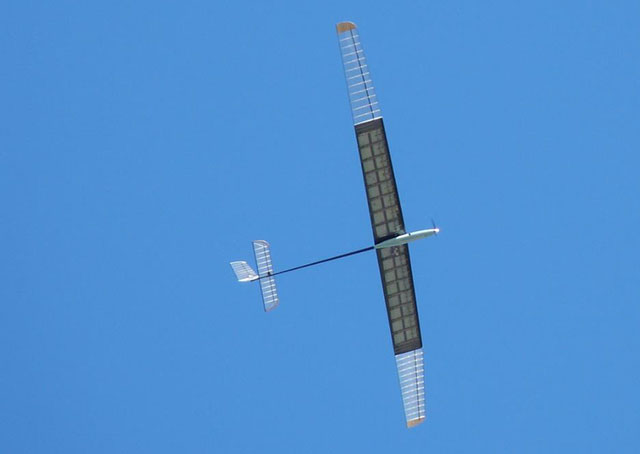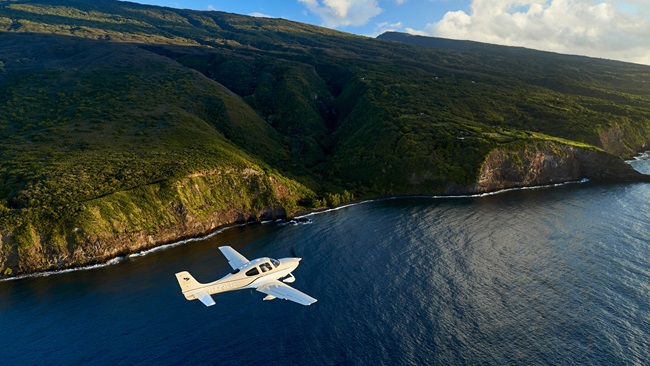Solar aircraft rounds the clock
Startup envisions high-altitude cell towers
A former Naval Air Station near Boston was the first chosen site for a round-the-clock flight powered by electrons alone, and the first step toward developing an aircraft capable of cruising above 60,000 feet for two years at a time.
Chris Bailey, founder and CEO of Global Flight Systems, said the 27-hour flight that began June 28 was cut short by a cooling issue; a week later, the scale-model prototype dubbed Eos Alpha logged 35 hours aloft (always below 400 feet, within sight of the operator at all times). Bailey said the company is seeking investors to back the next step: construction of a production prototype able to carry a 150-pound payload to 65,000 feet, and stay there. That aircraft, with a 150-foot wingspan, will be 10 times the size of the prototype already flown, and will almost certainly be tested first overseas.

Given the current FAA restrictions on unmanned systems (not to mention opposition from AOPA and other aviation organizations to allowing unmanned systems to share airspace with manned aircraft before they are proven able to see and avoid), Bailey said test flights in the upper atmosphere (which, of course, require transiting the airspace used by other aircraft) will almost certainly be conducted from other countries, and the initial deployment of the system will likely be done outside of the United States as well. That happens to coincide with where the need for such a system is greatest: nations that are not currently served by a robust cellular telephone and wireless data network.
Unlike the Google’s Project Loon, which aims to expand global communications using what amounts to cell towers dangling from high-altitude balloons, the Global Flight Systems approach offers control—a fixed-wing aircraft that can remain on station for up to two years at a time, and is not limited to flying where the winds blow. Both aim to fill the current gap between ground-based towers and satellites, which are too far away to effectively support mass communication. (Both are also suited for surveillance applications as well.)
“We’re operating about 20 times closer than the closest low-Earth orbit,” Bailey said, adding that such a system will allow virtually 'overnight' expansion of cellular and wireless data networks to areas where terrain, geography, and cost have limited availability. He sees the potential for tens of thousands of autonomous, solar-powered aircraft to be deployed worldwide.
Reliability remains to be proven—the major issue, experts told Aviation Week, that stands in the way of realizing the potential for autonomous aerial systems.
As for enabling an unmanned system to “see and avoid” manned aircraft in the National Airspace System, “we don’t have a solution for that,” Bailey said. Instead, he expects aircraft such as the Eos-150 (the full-size production version) will launch and recover through temporarily restricted airspace, though even that method will require solving the potential problems involved with an unplanned descent from 65,000 feet that could transit unrestricted airspace.
Redundant propulsion systems are “one of the selling points of our design,” Bailey said. “Ours is a little bit more reliable than the next guy.”



